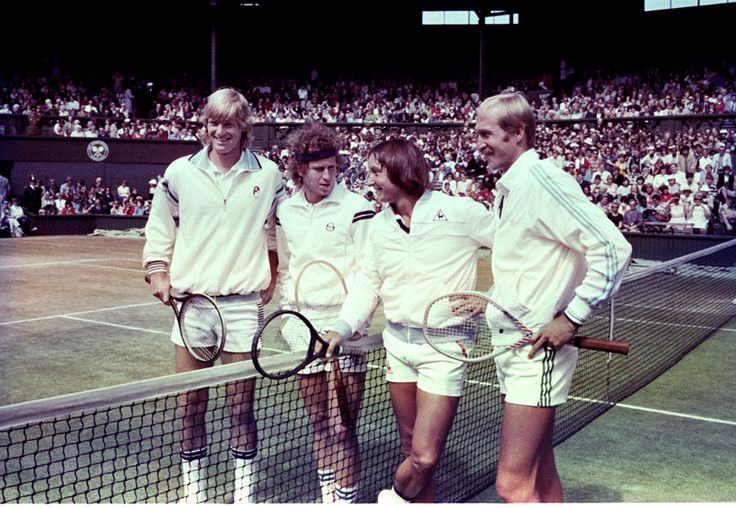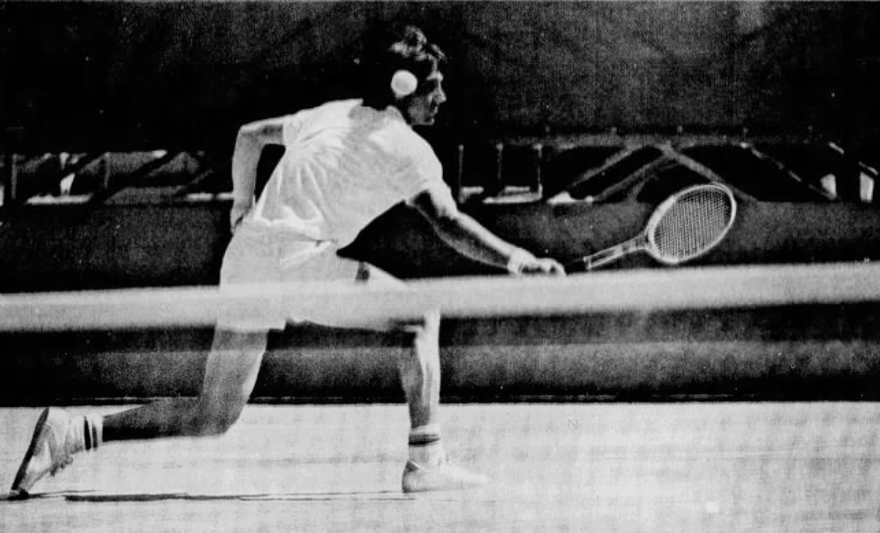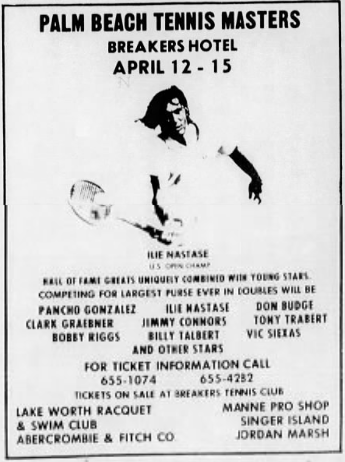Scroll down for Wimbledon updates, including a forecast for the title match.
With Andy Murray and Serena Williams pairing up in this year’s Wimbledon mixed doubles event, more eyes than ever are on tournament’s only mixed-gender draw. Mixed doubles is played just four times a year (plus the Olympics, the occasional exhibition, and the late Hopman Cup), so most partnerships are temporary, and it’s tough to get a sense of who is particularly good in the dual-gender format.
That’s where math comes into play. Over the last few years, I’ve deployed a variation of the Elo rating algorithm for men’s doubles. It treats each team as the average of the two members, and after every match, it adjusts each player’s rating based on the result and the quality of the opponent. Doubles Elo–D-Lo–is even better suited for mixed than for single-gender formats, because players rarely stick with the same partner. The main drawback of D-Lo for men’s or women’s doubles is that it doesn’t help us tease out the individual contributions of long-time teams such as Bob and Mike Bryan. By contrast, mixed doubles draws often look like a game of musical chairs from one major to the next.
The rating game
Let’s jump right in. The Wimbledon mixed doubles draw consists of 56 teams. Here are the 10 highest-rated of those 112 players, as of the start of the fortnight:
Rank Player XD-Lo
1 Venus Williams 1855
2 Serena Williams 1847
3 Bethanie Mattek-Sands 1834
4 Jamie Murray 1809
5 Ivan Dodig 1793
6 Latisha Chan 1785
7 Bruno Soares 1776
8 Leander Paes 1771
9 Heather Watson 1770
10 Gabriela Dabrowski 1760
Serena and Venus Williams require a bit of an asterisk, since both are playing mixed for the first time after a long break. Venus last played at the 2016 Olympics, and Serena last competed in mixed at the 2012 French Open. Maybe they’re rusty. My XD-Lo algorithm doesn’t include any kind of adjustment for injuries or other layoffs, so it’s possible that we should expect them to perform at a lower level. On the other hand, they are among the greatest doubles players of all time, and players tend to age gracefully in doubles. Venus lost her opening match, but perhaps we should blame that on Francis Tiafoe (XD-Lo: 1,494). The sisters will probably trade places at the top of the list once Wimbledon results are incorporated.
Murray’s rating is a decent but more pedestrian 1,648, so Murray/Williams is not the best team in the field. But they’re close. The strongest pair is Jamie Murray and Bethanie Mattek Sands–3rd and 4th on the list above–followed by Ivan Dodig and Latisha Chan, 5th and 6th on the individual list. Due to the vagaries of ATP and WTA doubles rankings and the resulting seedings, Dodig/Chan entered the event as the narrow favorites, because they got a first-round bye and Murray/Mattek-Sands did not.
Here are the top ten teams in the draw:
Rank Team XD-Lo
1 Bethanie Mattek-Sands/Jamie Murray 1822
2 Ivan Dodig/Latisha Chan 1789
3 Bruno Soares/Nicole Melichar 1762
4 Serena Williams/Andy Murray 1748
5 Gabriela Dabrowski/Mate Pavic 1734
6 Leander Paes/Samantha Stosur 1731
7 Heather Watson/Henri Kontinen 1708
8 Venus Williams/Frances Tiafoe 1674
9 Abigail Spears/Marcelo Demoliner 1653
10 Neal Skupski/Chan Hao-ching 1634
The top five have survived (though Murray/Mattek-Sands and Pavic/Dabrowski will complete their second-round match this afternoon, leaving only four), and of the last 18 teams standing, only one other one–John Peers and Shuai Zhang–is rated above 1,600.
Forecasting SerAndy
Using my ratings, Murray/Williams entered the tournament with a 9.8% chance of winning. That made them fourth favorite, behind Dodig/Chan (17.1%), Murray/Mattek-Sands (16.3%), and the big-serving duo of Bruno Soares and Nicole Melichar (14.5%). I’ll update the forecast this evening, when the second round is finally complete.
Murray/Williams’s second-round match is against Fabrice Martin and Racquel Atawo. They are both excellent doubles players, though neither has excelled in mixed. Atawo, especially, has struggled. Her XD-Lo is 1,304, the third-lowest of anyone who has entered a mixed draw since 2012. (Shuai Peng is rated 1,268, and Marc Lopez owns last place with 1,252.) A player with no results at all enters the system with 1,500 points, so falling to 1,300 requires a lot of losing. The combined ratings translate into a 89% chance of a Murray/Williams victory.
The challenge comes in the third round. Soares/Melichar are the top seed, and they have already advanced to the round of 16, awaiting the winner of Murray/Williams and Martin/Atawo. Thus two of of the top four teams will likely play for a place in the quarter-finals, with Soares/Melichar holding a narrow, 52% edge.
Historical peaks
Generating these current ratings required amassing a lot of data, so it would be a waste to ignore the history of the mixed doubles format. Here are the top 25 female mixed doubles players, ranked by their peak XD-Lo ratings:
Rank Player Peak
1 Billie Jean King 2043
2 Greer Stevens 2035
3 Margaret Court 2015
4 Rosie Casals 2000
5 Martina Navratilova 1998
6 Helena Sukova 1991
7 Anne Smith 1989
8 Betty Stove 1985
9 Jana Novotna 1977
10 Martina Hingis 1964
11 Wendy Turnbull 1956
12 Kathy Jordan 1948
13 Elizabeth Smylie 1947
14 Arantxa Sanchez Vicario 1946
15 Serena Williams 1942
16 Venus Williams 1937
17 Francoise Durr 1934
18 Jo Durie 1929
19 Kristina Mladenovic 1922
20 Zina Garrison 1901
21 Samantha Stosur 1898
22 Larisa Neiland 1891
23 Lindsay Davenport 1888
24 Victoria Azarenka 1887
25 Natasha Zvereva 1886
Venus really can’t catch a break. She’s one of the best players of all time, and Serena is always just a little bit better.
And the top 25 men:
Rank Player Peak XD-Lo
1 Owen Davidson 2043
2 Bob Hewitt 2042
3 Marty Riessen 2016
4 Todd Woodbridge 2000
5 Frew McMillan 1999
6 Kevin Curren 1997
7 Jim Pugh 1995
8 Ilie Nastase 1975
9 Tony Roche 1962
10 Bob Bryan 1949
11 Rick Leach 1938
12 Mahesh Bhupathi 1933
13 Mark Woodforde 1929
14 Justin Gimelstob 1929
15 Max Mirnyi 1926
16 John Lloyd 1922
17 Emilio Sanchez 1918
18 Ken Flach 1909
19 Jeremy Bates 1908
20 John Fitzgerald 1906
21 Cyril Suk 1902
22 Wayne Black 1889
23 Dick Stockton 1881
24 Jean-Claude Barclay 1879
25 Mike Bryan 1875
Owen Davidson won eight mixed slams with Billie Jean King, plus three more with other partners. Bob Hewitt won six, spanning 18 years from 1961 to 1979. (We can’t erase his accomplishments from the history books, but any mention of Hewitt comes with the caveat that he is a convicted rapist who has since been expelled from the International Tennis Hall of Fame.)
It is interesting to see two famous pairs represented on the men’s list. Bob Bryan ranks 10th to Mike’s 25th, and Todd Woodbridge comes in 4th to Mark Woodforde’s 13th. We probably can’t conclude from mixed doubles results that one member of the team was a superior men’s doubles player, but it is one of the few data points that allows us to compare these partners.
The ignominious Spaniards
Finally, I can’t spend this much time with mixed doubles ratings without revisiting the case of David Marrero. You may recall the 2016 Australian Open, when Marrero’s first-round match with Lara Arruabarrena triggered “suspicious betting patterns.” As I wrote at the time, the most suspicious thing about it was that Marrero–who was terrible at mixed doubles and admitted that he played differently with a woman across the net–could still find a partner.
He entered that match with an XD-Lo rating of 1,349–the worst of any man in the draw, though Anastasia Pavlyuchenkova was a few points lower–and left it at 1,342. He played his last mixed doubles match at Wimbledon that year, and–surprise!–he lost. One hopes he’ll stick to men’s doubles for the remainder of his career, sticking with an XD-Lo rating of 1,326.
Marrero’s only saving grace is that he’s better than his compatriot Marc Lopez. Lopez has been active in mixed doubles more recently, entering the US Open last year with Arruabarrena. After that loss, he fell to his current rating of 1,252, the lowest mark recorded in the Open Era.
Fortunately for us, this year’s Wimbledon draw includes both Williams sisters, both Murray brothers, a healthy Mattek-Sands … and very few players as helpless in the mixed doubles format as Marrero or Lopez.
—
Update: Murray/Williams won their second-rounder, setting up the final 16. Mixed doubles isn’t the top scheduling priority, so it didn’t exactly work that way–by the time Muzzerena advanced, two other teams had already secured places in the quarter-finals. Ignoring those for the moment, here is the last-16 forecast:
Team QF SF F W
Soares/Melichar 52.5% 44.5% 33.2% 18.8%
Murray/Williams 47.5% 39.7% 29.0% 15.8%
Middelkoop/Yang 55.5% 9.5% 3.6% 0.8%
Daniell/Brady 44.5% 6.3% 2.1% 0.4%
Peers/Zhang 61.6% 36.9% 13.8% 5.2%
Lindstedt/Ostapenko 38.4% 18.7% 5.2% 1.5%
Skugor/Olaru 56.2% 26.3% 8.3% 2.6%
Mektic/Rosolska 43.8% 18.0% 4.8% 1.3%
Player QF SF F W
Koolhof/Peschke 42.6% 10.1% 2.4% 0.6%
Qureshi/Kichenok 57.4% 16.7% 4.9% 1.5%
Sitak/Siegemund 27.4% 16.0% 5.3% 1.8%
Pavic/Dabrowski 72.6% 57.2% 30.8% 17.5%
Dodig/Chan 75.9% 64.6% 44.1% 28.1%
Roger-Vasselin/Klepac 24.1% 15.5% 6.6% 2.5%
Hoyt/Silva 54.1% 11.3% 3.5% 1.0%
Vliegen/Zheng 45.9% 8.6% 2.5% 0.6%
The two teams already in the quarters are Skugor/Olaru and Hoyt/Silva. Since both of their matches were close to 50/50, you can roughly double their odds, and the odds of the other teams are only a tiny bit less. The remaining six third-round matches are scheduled for Wednesday, and I’ll try to update again when those are in the books.
Update 2: Murray/Williams are out, so the number of people interested in mixed doubles has fallen from double digits back to the typical level of single digits. The departure of the singles stars also leaves one clear favorite in each half. Here is the updated forecast:
Team SF F W
Soares/Melichar 83.4% 64.3% 36.4%
Middelkoop/Yang 16.6% 6.7% 1.5%
Lindstedt/Ostapenko 46.0% 12.6% 3.7%
Skugor/Olaru 54.0% 16.4% 5.2%
Koolhof/Peschke 37.5% 7.3% 1.8%
Sitak/Siegemund 62.5% 17.2% 6.0%
Dodig/Chan 84.4% 68.3% 43.3%
Hoyt/Silva 15.6% 7.2% 2.0%
All four quarter-finals are scheduled for Thursday, so I’ll post another update tomorrow evening.
Update 3: We’re down to four teams. Of the Elo favorites in the quarter-finals, only Dodig/Chan survived, leaving them as the overwhelming pick to take the title. Here’s the full forecast:
Team F W
Middelkoop/Yang 42.3% 8.2%
Lindstedt/Ostapenko 57.7% 14.1%
Koolhof/Peschke 14.1% 6.3%
Dodig/Chan 85.9% 71.4%
Update 4: Both favorites won in Friday’s semi-finals, so we’ve got a final between Lindstedt/Ostapenko and Dodig/Chan. The first team didn’t get an opening-round bye, so they won one more match to get here. They also have a better story, since Ostapenko keeps hitting her partner in the head. Dodig/Chan entered as the 8th seeds, despite being the second-best team according to XD-Lo.
Consequently, Dodig/Chan get the edge here, with an 81% of winning the 2019 Wimbledon Mixed Doubles title.




